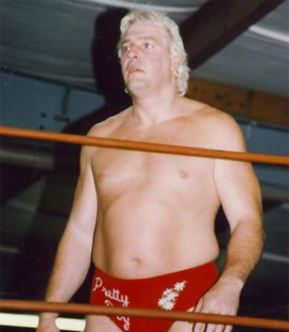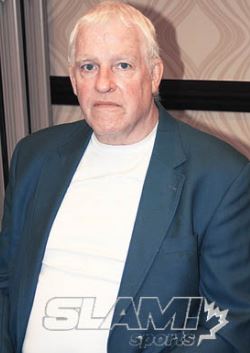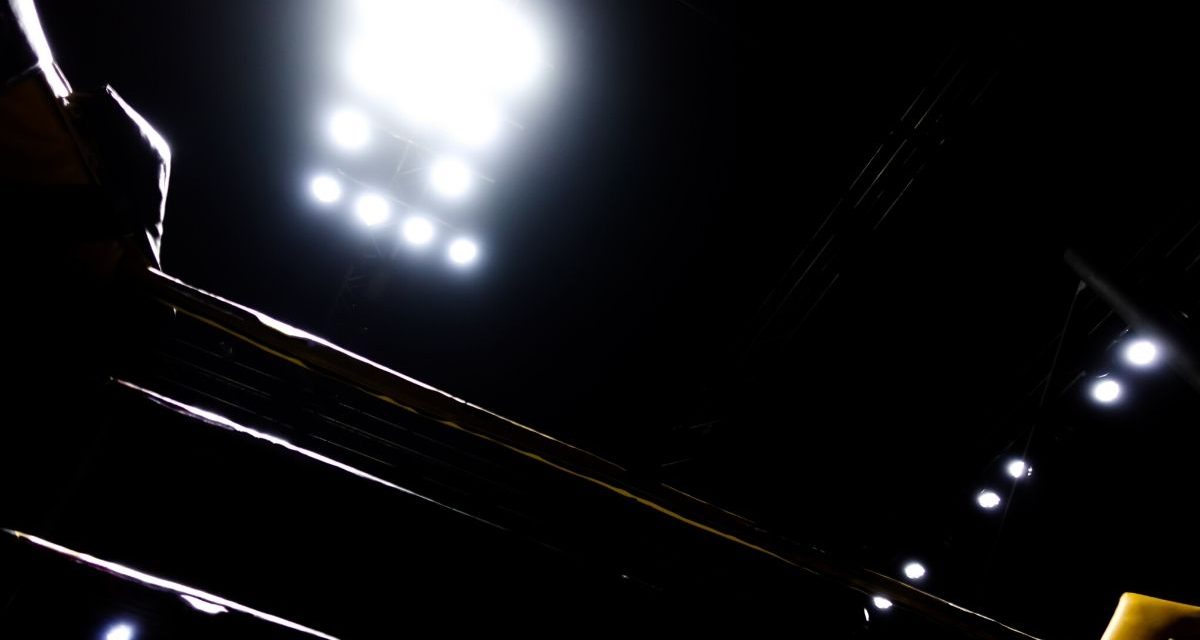“Pretty Boy” Doug Somers, who died today at age 65, took the really long road to the top as AWA World tag team champion. From setting the ring up, taking tickets, refereeing, and working as an enhancement talent, he really paid his dues before his biggest claim to fame.
Douglas Somerson, born September 22, 1951, grew up in Minneapolis, one of seven children. With the AWA promotion running in town, he gravitated to professional wrestling.
“My dad took me to my first wrestling match when I was 9 at the old Minneapolis Auditorium,” Somers told Jim Varsallone of the Miami Herald in 2009. “So I saw this guy setting up the ring. It was Joel Snyder, an old-time referee and former amateur wrestler. I asked if I could set up the ring, and I started doing that and slowly worked my way in.”
Once he grew into a 6-foot-3, 230-pound man, there was a chance to move beyond his early duties with the promotion, including taking tickets at TV tapings at Minneapolis’ Calhoun Beach Hotel and driving the ring truck while still in high school.

“Pretty Boy” Doug Somers
One of the other young men helping out would be his future AWA tag team partner, Paul Perschmann, who would later become “Playboy” Buddy Rose.
“We grew up together in Minneapolis,” Somers told Dave Meltzer of The Wrestling Observer after Rose’s death in 2009. “We met when Buddy was 17 and I was 18. We broke in together, started by putting up the ring and stayed friends for 40 years. When we got started in wrestling, he went his way and I went my way.” Another who helped with the ring truck was John Sutton, who would later become manager Sir Oliver Humperdink.
Many of the names in the AWA had a hand in training Somerson, including Harley Race, Larry Hennig, Lars Anderson, Verne Gagne, and Billy Robinson. He served as a referee for three years, and debuted in 1971.
A June 1976 Ring Wrestling profile of Doug Somers — titled “I Don’t Like People” — praised his desire to be a pro wrestler, a man who “never hesitated to use the rough, sometimes mercenary, style of wrestling.”
Like many wrestlers during the territorial era, Somers hit the road to learn his craft: New York, Minneapolis, Ohio, Mississippi, North Dakota, Kansas, Texas, the Carolinas, Florida, Georgia, Louisiana, Kansas City, San Antonio, Japan, Puerto Rico.
He became an excellent hand. In a Facebook post today, after learning of Somers’ death, Les Thatcher praised his late friend. “We first become friend in Charlotte in the early ’70s. I had the honor of locking up with him many times and it was always a night off. He was a talented heel ‘worker’ who knew how to tug at the fans’ emotions.”
While his biggest run came in the AWA in the 1980s, Somers’ most influential time was in Oklahoma, where he fell for and married the boss’ daughter. Before Bill Watts took over the territory, it was Leroy McGuirk running the area, and his daughter, Michelle “Mike” McGuirk went from a marriage to Brian Blair to one with Somers. The “Pretty Boy” helped out in the office in Tulsa.
The Somers-Rose tag team was not something they had discussed when setting up the ring for the AWA, and their careers never really crossed in the years in between. Then they were both home in Minneapolis one Christmas, and each called promoter Verne Gagne about working a few dates while home.
“One thing led to another, and Ray Stevens and Wahoo McDaniel in the AWA office said it was a natural to put us together. I knew Ray for 20 years prior, and I wrestled both Wahoo and Ray. I respect them and their opinion,” Somers told Varsallone. “It was the right time and the right place. Buddy with his body, blonde hair and me. We never tried to outdo each other. We worked together. That’s why we did so well. It was fun, and it was good. It was a marriage, a good marriage.”
The tag team worked and was enhanced by the presence of Sherri Martel as a manager who could also wrestle and take some awesome bumps. She had worked with Rose prior.
In May 1986, Somers and Rose beat Curt Hennig and Scott Hall for the AWA tag team titles. The bleached-blond duo reigned at a time when the AWA was shown on ESPN across the United States.
One of the teams they worked with were the young team of the Midnight Rockers, Marty Jannetty and Shawn Michaels. An incredible bloodbath match between the two teams aired on ESPN and continued to be talked about years later.
“[T]he one match with Buddy and Doug is the one everyone always comments on, and that was an awesome match,” said Michaels in an IGN.com interview, talking about his DVD, “but the next time we came back to Vegas, we did a cage match, and I thought that one was really cool. That one doesn’t get much play because the bloodbath one was the one that put me on the map, but the next month, doing the blowoff in the cage was pretty cool.”
Jannetty recalled the Rose and Somers team. “Both of those guys were perfect to take us to the next step, the next level. Buddy Rose, he’s like a genius,” he said. “Doug Somers, he was solid. I think Buddy was really the best part of that team, not putting Doug down. Doug was just a solid worker, he was there to do whatever, he knew the basic stuff. But Buddy had great ideas.”
Somers explained to Varsallone why the Midnight Rockers versus Rose and Somers worked so well. “We knew what we had to do. We were in the main event, and that means we were responsible for the livelihood of 30 other guys. Being in the main event was the big match and effected the pay for everyone. The main event is what draws the people. We drew well in the main event, and we never had a bad payday.”
The Midnight Rockers won the tag titles in January 1987, and Rose left the promotion. Somers tried a couple of different tag team partners, like Buddy Wolfe and Kevin Kelly, but nothing clicked. In the last days of the AWA, Somers was managed by Johnny Valiant, and was also in the Global Wrestling Federation.

Doug Somers at the Charlotte NWA FanFest in Atlanta in the summer of 2011. Photo by Ashley Forrester
Somers continued to wrestle on a part-time basis into the 2000s, and can be seen as enhancement on some WWF shows. He was also on the losing end to Van Hammer at WCW’s 1991 Halloween Havoc pay-per-view.
Away from the ring, Somers had three sons and a daughter who died young. He lived around Atlanta for the last number of years, and made occasional appearances at fan fests.
“You have to make a lot of sacrifices as a professional athlete, and the hardest part is traveling, being away from family,” Somers told Varsallone.
For more recent fans of pro wrestling, Somers’ name is associated with a lawsuit filed in November 2011 against World Wrestling Entertainment. He was after compensation for his likeness being used on WWE-issued DVDs, the forerunner to the WWE Network, WWE Classics on Demand, books and other materials.
He was represented by Atlanta-based attorney Edward M. Gilgor. Somerson’s poor health was brought up, and it was claimed that he suffered more than 400 concussions as well as broken bones and injuries to his neck, back, knee, and foot.
“Mr. Somerson works to this very day, despite the massive physical injuries he has sustained,” read part of the case. “Mr. Somerson has never entered into any agreement with WWE, the McMahons, or any predecessor entity with regard to the right to use his name and/or likeness.”
After several months, the case was ruled in favour of WWE.
Somers had been in poor health for the last few years, and the news of his passing on the morning of May 16, 2017, brought many messages to his Facebook page, and a GoFundMe page to help pay for funeral costs run by one of his wrestling students, Josh Storm. The UIW promotion is planning a fundraising show as well, and has asked for donations to be made in his name to Hutchesons Memorial Chapel in Buchanan Ga.
Funeral arrangements are not known at this time.

